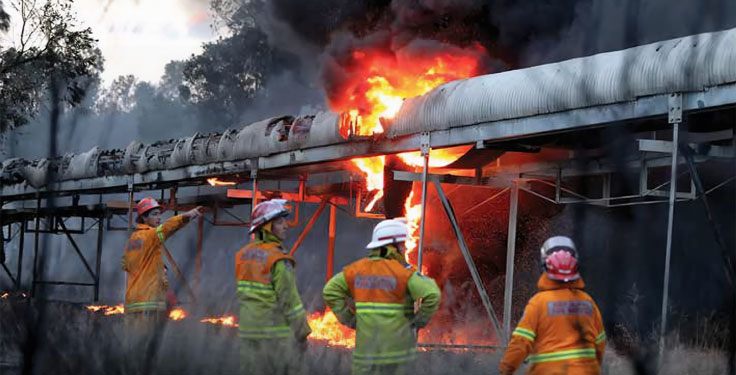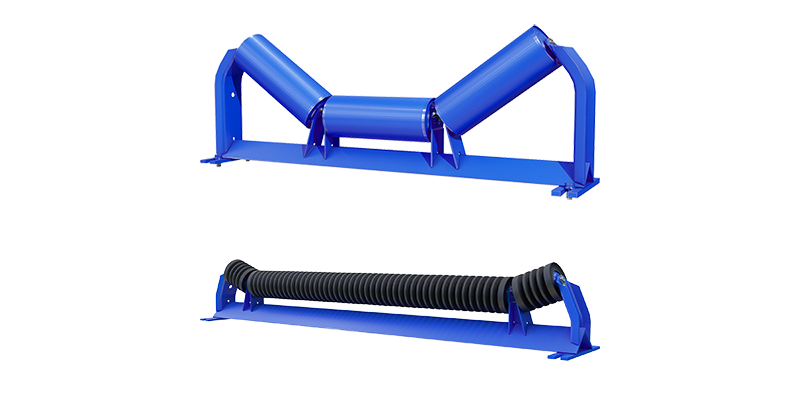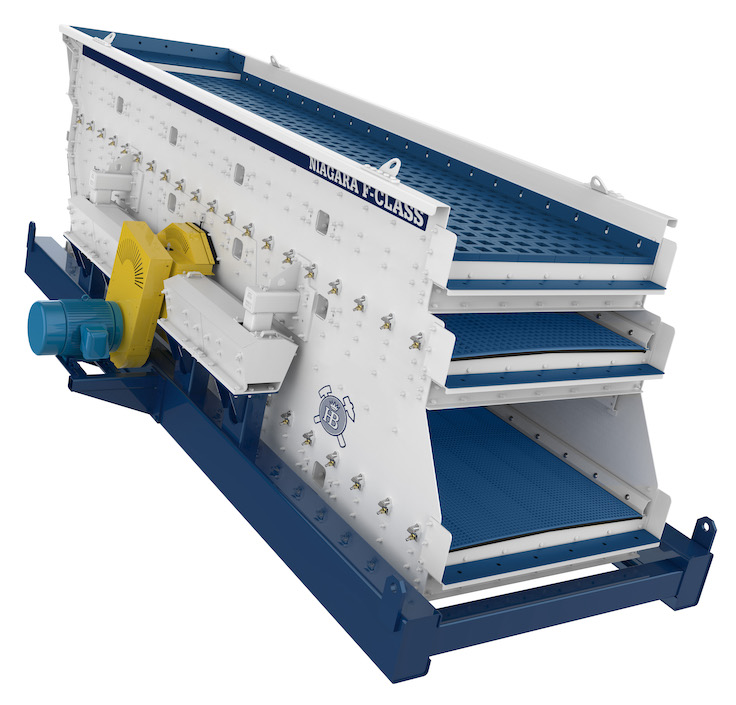Conveyor fires are a real hazard to mining operations, but operators can best position their jobsites by understanding the threat and taking steps to thwart it.
For starters, three elements must be present for a fire to be created: oxygen, heat and fuel (aka, “the fire triangle”). One factor that makes conveyor fires so hazardous is that the belt itself can be the fuel.
According to a National Institute for Occupational Safety & Health study of belt fires, any of the standard neoprene, PVC, chloroprene and BELT-approved SBR belts can ignite. And although some belts are self-extinguishing, the Publications Office of the European Union concludes there is no non-flammable belt – particularly when accompanied by a combustible material.
Friction
Inadequate belt cleaning in the discharge zone can lead to dust and carryback on the return side of the belt, causing a fouled tail pulley to run under a stalled belt. This creates tremendous heat.
Dust emissions of any kind – combustible or noncombustible – originating from the loading or discharge zones tend to foul rolling components. This leads to failure of the seals, contamination in the bearings and eventually causes the roller to seize.
A rolling component can also stall if impact or cargo weight causes the bearings to collapse. Continuous frictional contact with a seized idler or the roller face can cause a loaded belt to exceed safe operational temperatures. It can also potentially result in extreme wear on the belt, degrading the main fire-retardant layer and exposing the heat-sensitive materials found in the belt’s inner construction.
Controlling fugitive material
Fugitive material control and regular cleaning of spillage are imperative.
Without proper belt cleaning, chute sealing and belt tracking, spillage that collects around the loading and discharge areas, as well as along the belt path, can damage moving components, restrict access for fire crews and potentially act as fuel.
Dust control is extremely important when handling combustible substances, and it is recommended that operators keep in mind the “dust explosion pentagon” instead of merely considering “the fire triangle.” Examples of highly combustible materials include:
• Coal. A carbon-based, highly flammable material that burns at high heat, with dust that is easily ignited by a spark.
• Petroleum coke (petcoke). A carbon-rich derivative of oil processing used as a coal alternative for power generation, among other applications. In dense concentrations, the dust is combustible with a high-energy spark.
• Cellulose. A naturally occurring polymer found in wood, paper and grains. Dust readily ignites.
Significant amounts of dust can collect on the walls of the loading zone chute. If a foreign metal object is accidentally introduced to the enclosed area, a spark can potentially create an explosion.
Additionally, common maintenance within the chute such as removal of the wear liner using a cutting torch often requires confined-space entry by workers. If the inside of the chute is not adequately cleaned, this task could pose a serious hazard.
Think like an inspector
When examining conveying equipment, one should approach the task with the same critical mindset as an inspector from the Mine Safety & Health Administration, the Occupational Safety & Health Administration or the local fire department. Safety professionals recommend taking a holistic view of the system and the combustibility of the material.
When making a conveyor fire risk assessment, also consider:
• Spillage levels and cleaning schedules
• The conveyor’s proximity to workstations
• How the conveyor design (i.e., enclosures, narrow walkways) could create a hazard for employees
• Safe storage of flammable liquids
• Compliant signage












